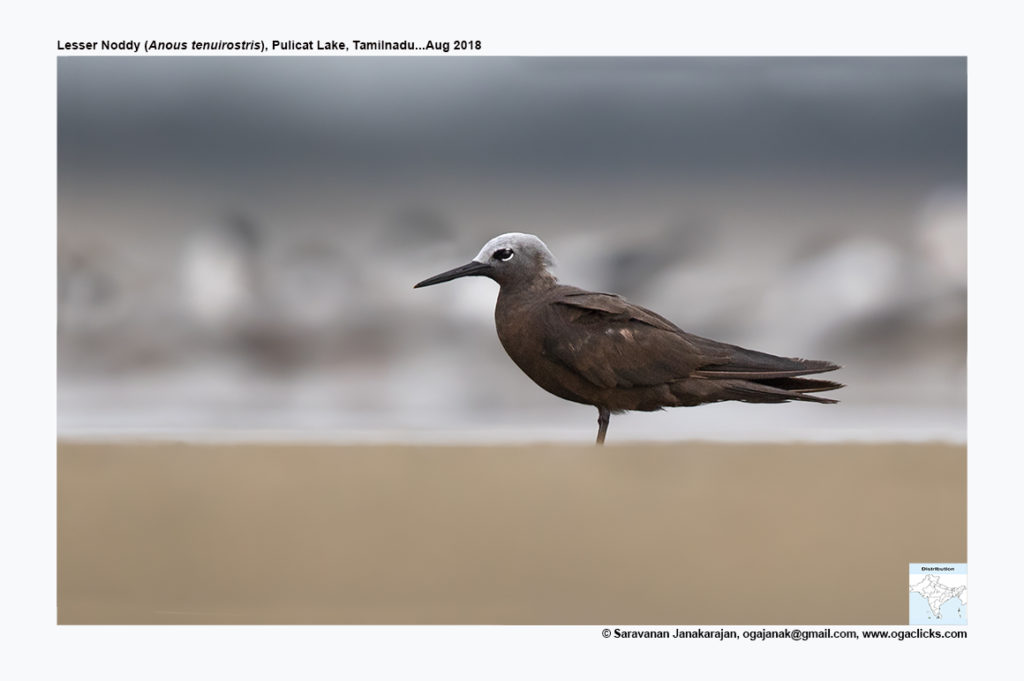Lesser Noddy

Lesser Noddy Anous tenuirostris
Etymology:
- Anous : Greek word for foolish, silly
- Tenuirostris : Latin word tenuis- slender; rostris –billed { Slender billed}
Vernacular Names: Mald: Maranga
Distribution in India: Pelagic species found in Indian Ocean.
Description: Size of 30–34 cm; Wt. of 97–120 g; wingspan of 58–63 cm. It is a blackish brown, with whitish forehead and crown blending into more ashy grey hindcrown and nape; lores are whitish; sides of neck and throat are sooty; iris is dark brown, bill is black, legs are brownish black. It is small and paler, with pale lores; pale of head blends more evenly into dark of neck. The juvenile is paler brown, but also has white cap. The race melanops is similar to nominate, but with blackish stripe above eye extending onto lores.
Habitat: It is pelagic when not breeding. It nests on oceanic islets.
Food habits:When on land it eats small fish and invertebrates. It feeds by hovering and aerial- or contact-dipping but does not plunge-dive. It feeds in flocks and often associates with Brown Noddy.
Breeding habits: They breed in large colonies that may number tens of thousands of pairs. They breed in May-Jun and Aug–Dec on Aride islands in Seychelles and Mauritius. The nests are substantial platforms of brown algae and excreta on mangroves; nests are often close together. They lay a clutch of one egg. The Incubation period is 34 days. The fledging period is 40 days. The chicks that fall from the nest are not fed but adults may re-lay. The tree-nesting habit makes the nests vulnerable to strong winds.